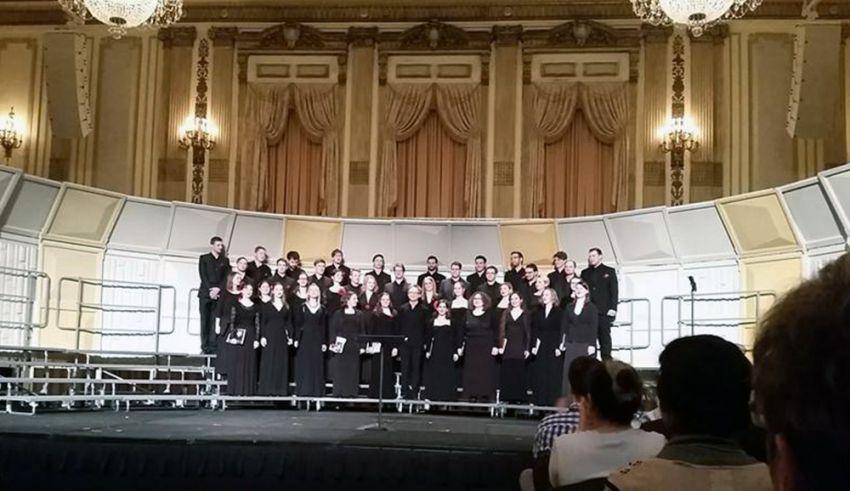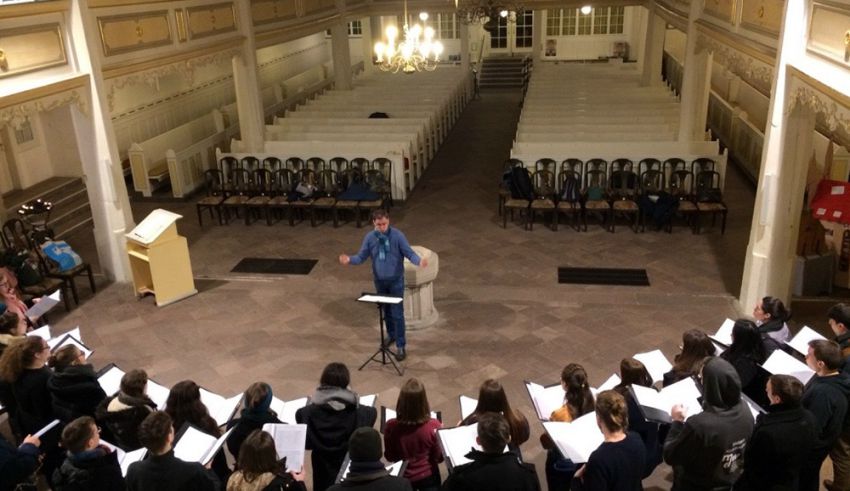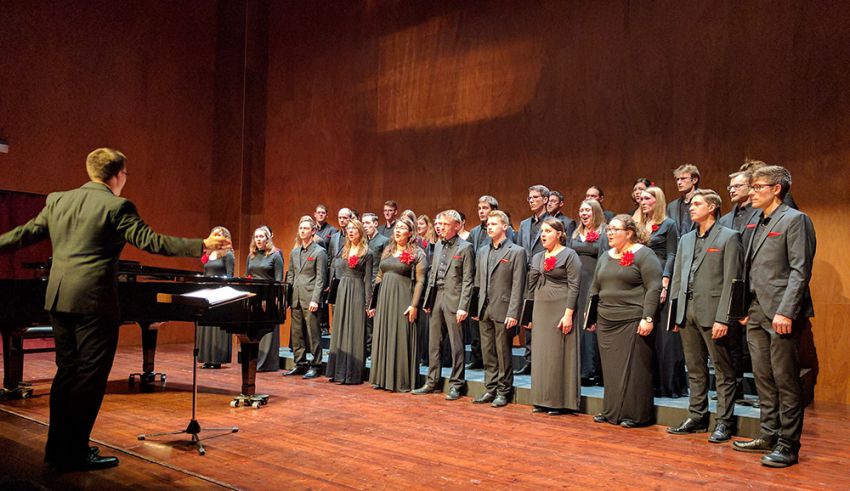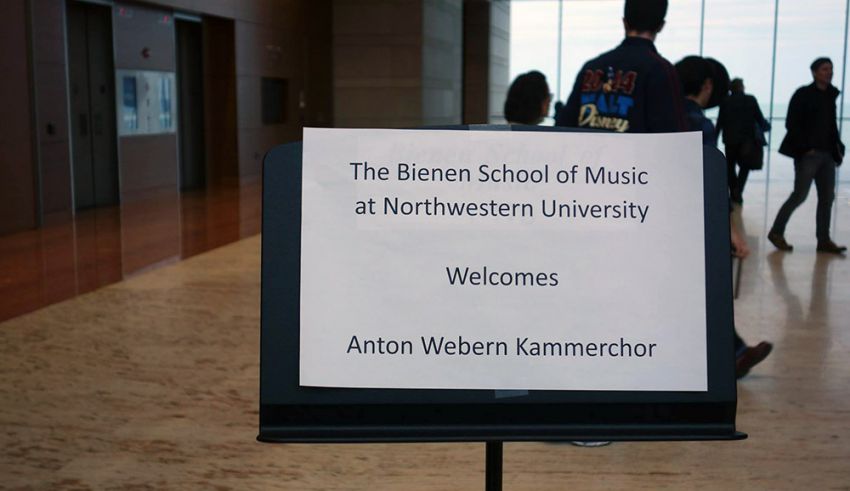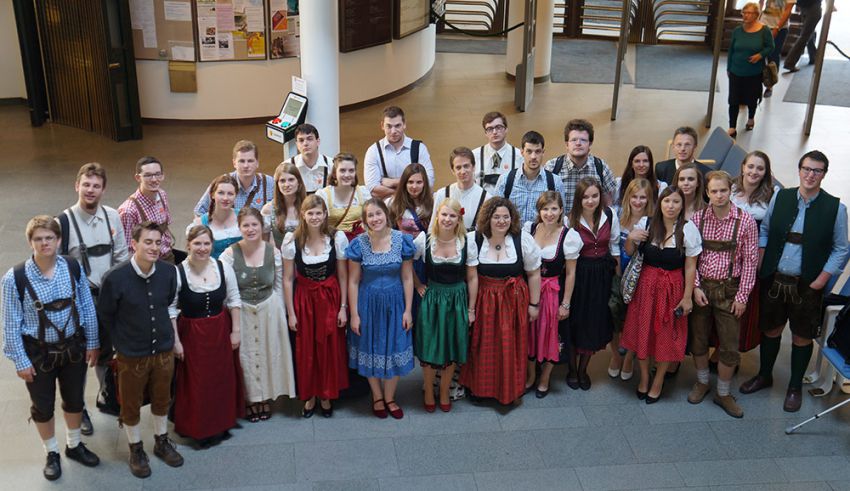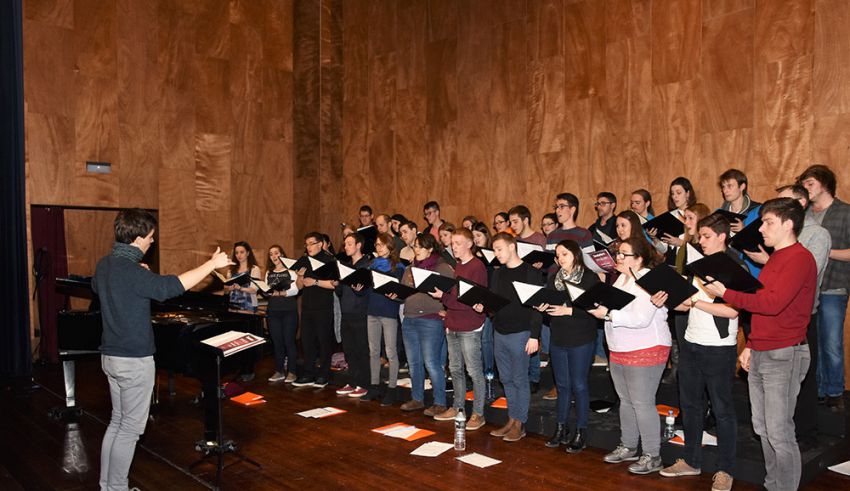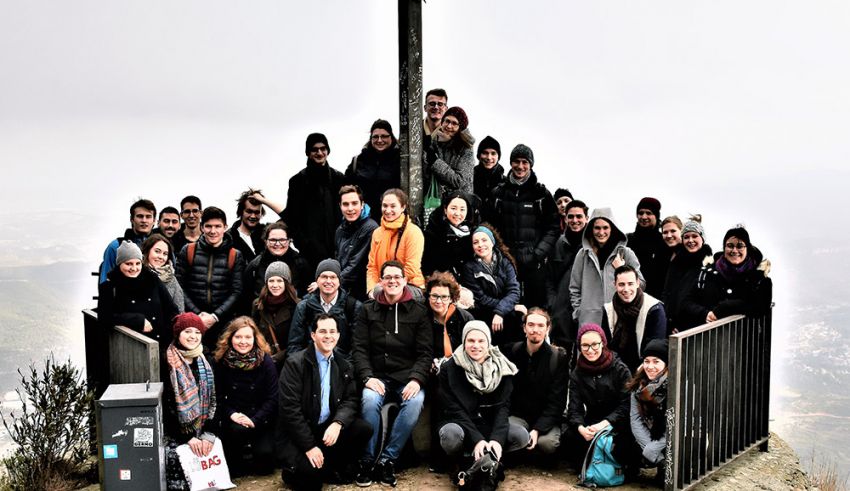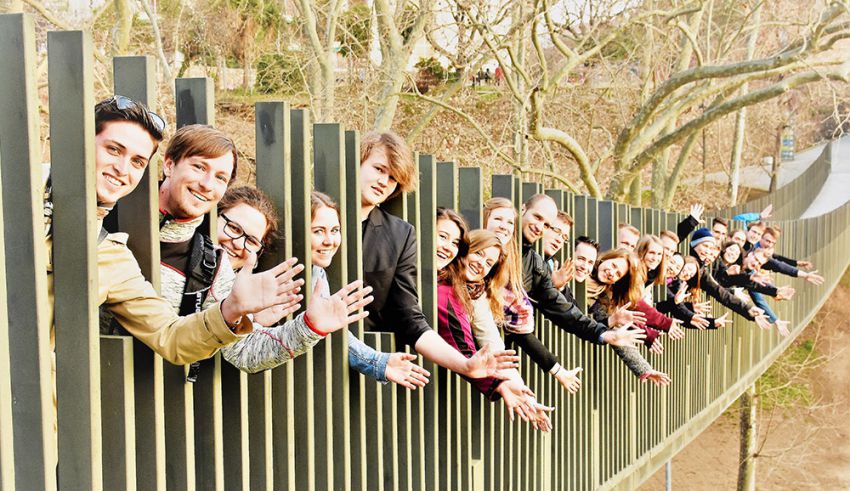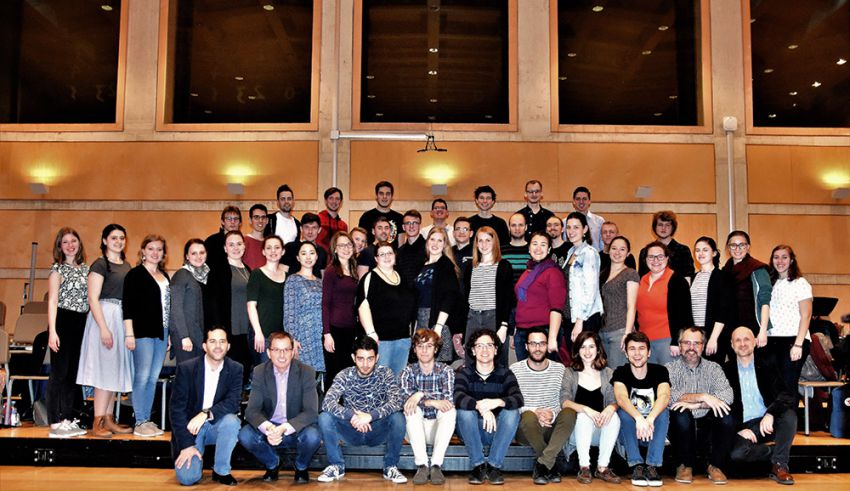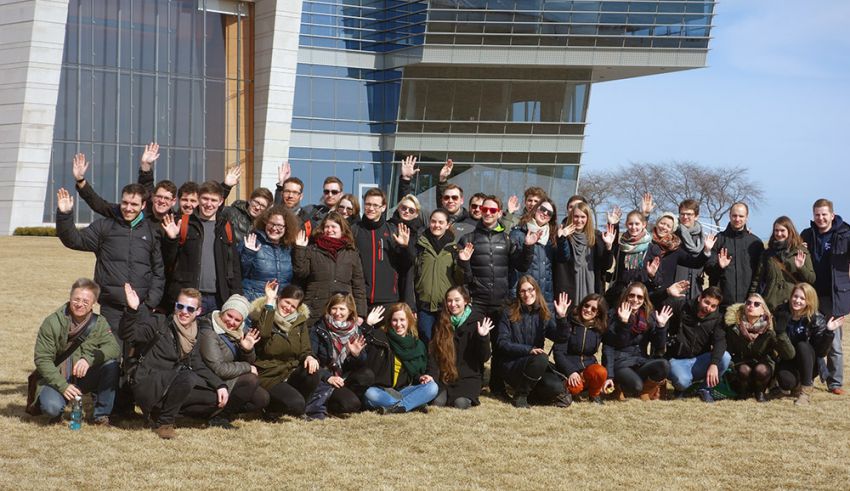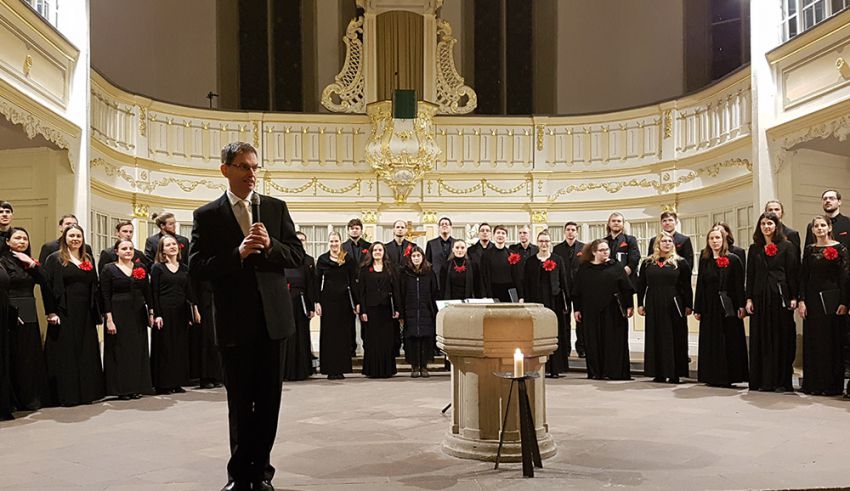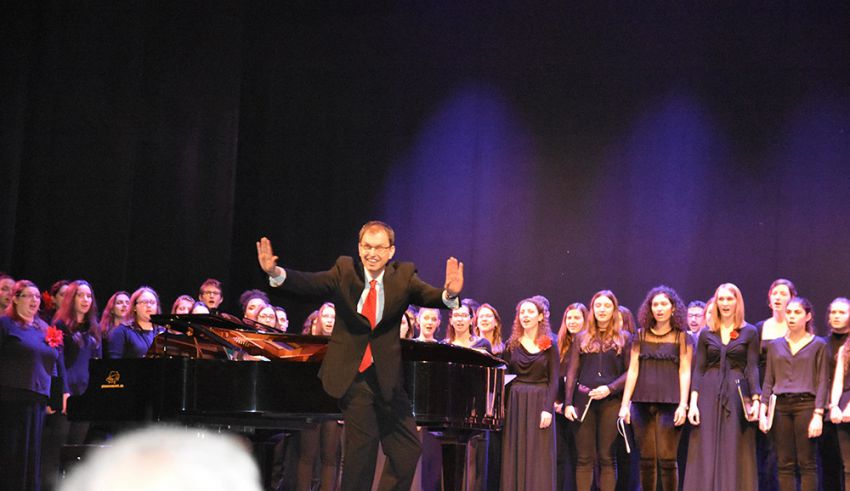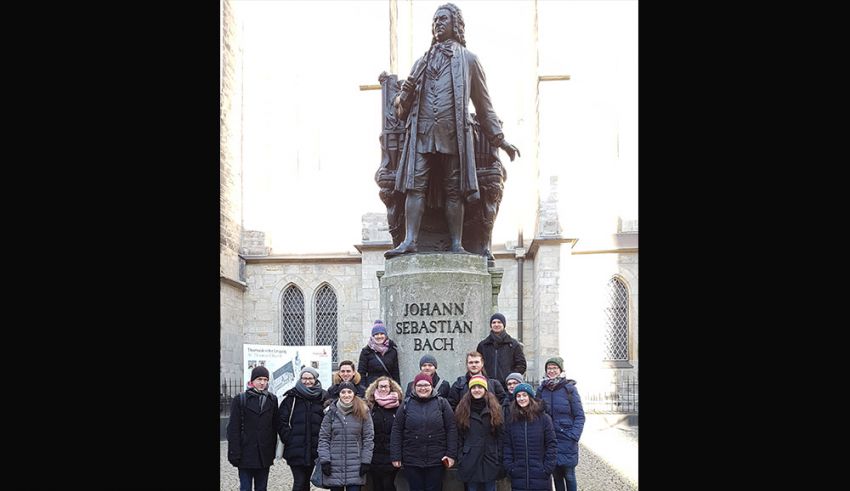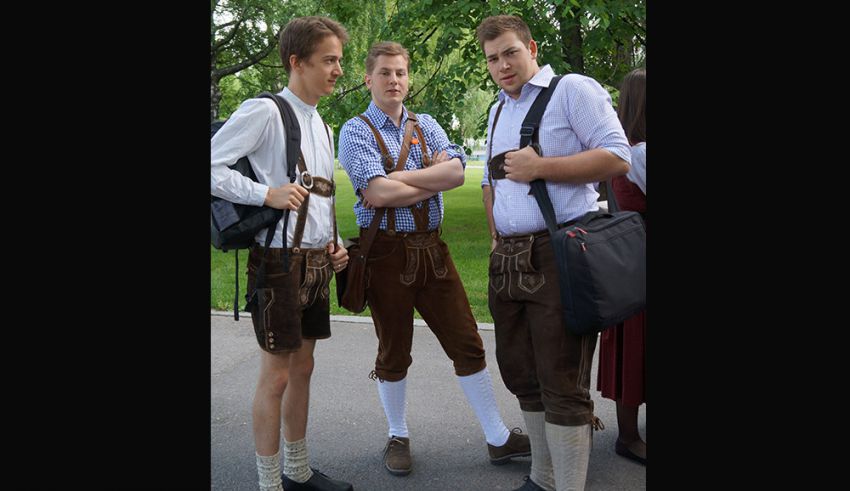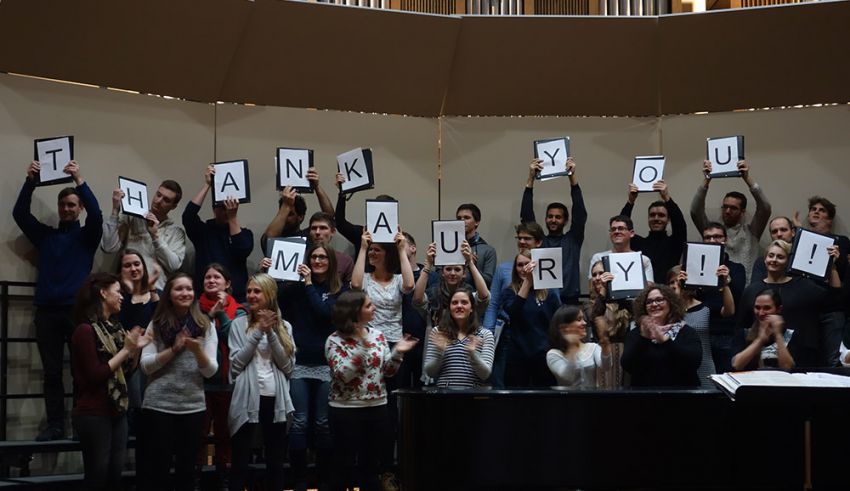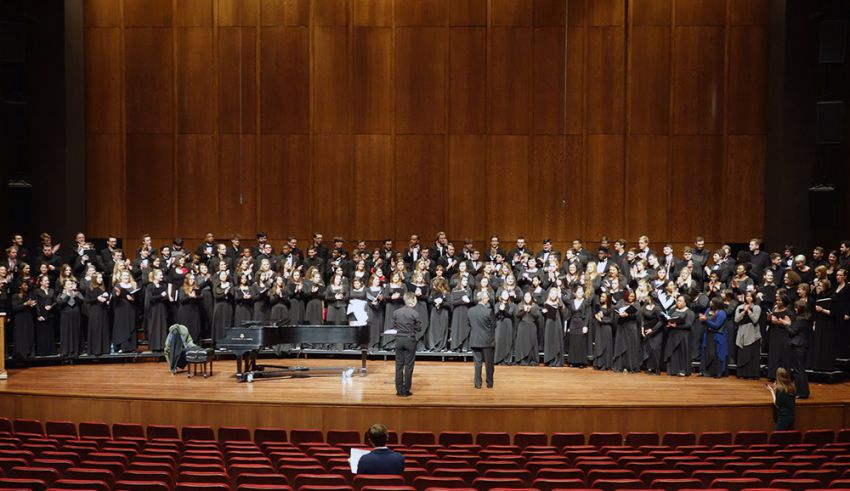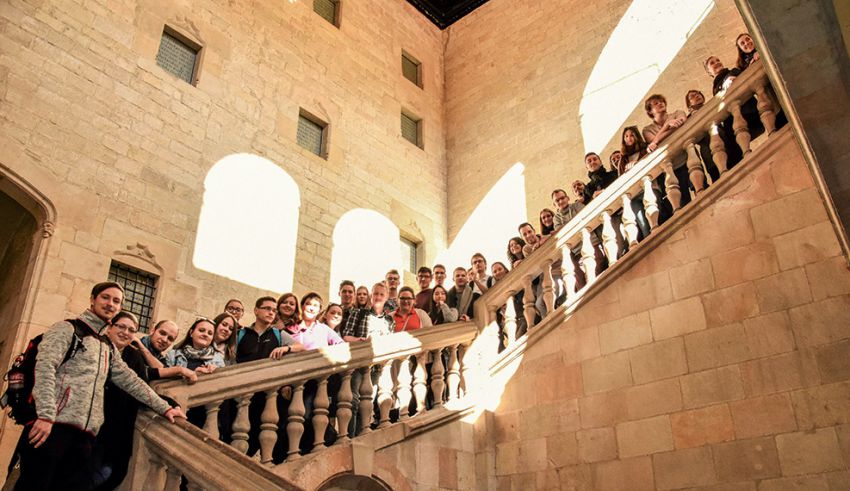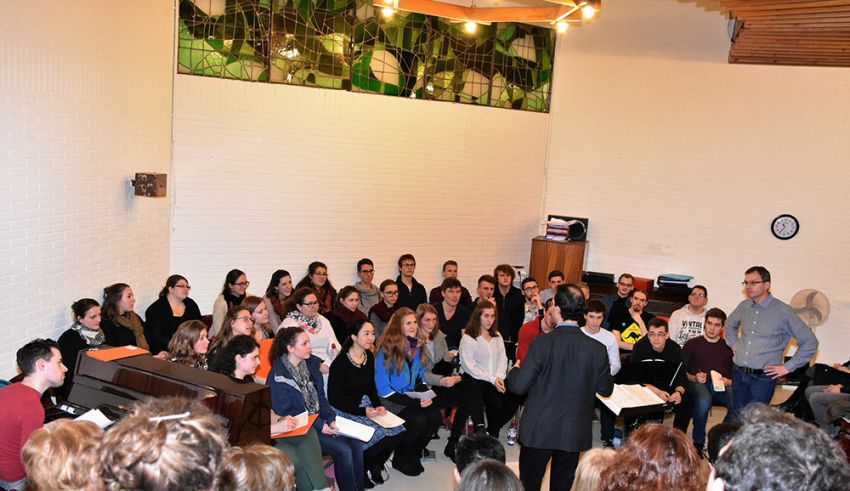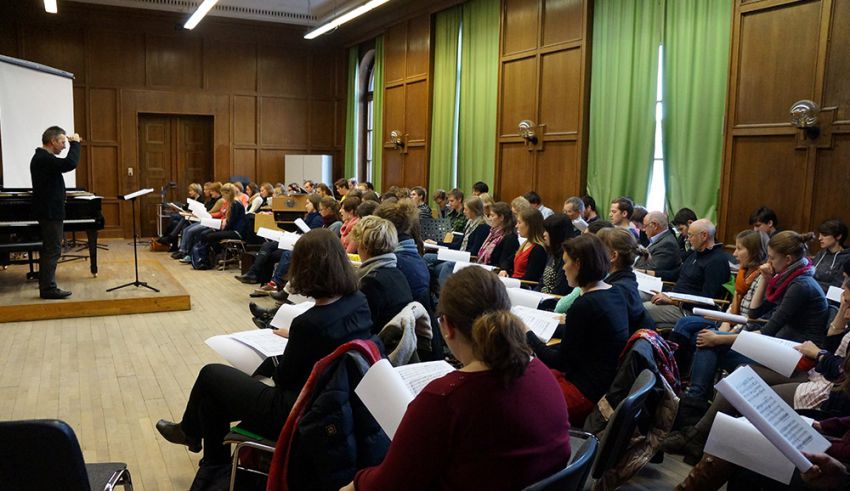The WebernKammerchor’s International Concert Tours
Every time this many-voiced flagship ensemble of the mdw prepares to set out on one of its annual tours through Europe or overseas, choir director Alois Glaßner leads a public performance entitled “Farewell” shortly before so that the choir can present its concert programme to the Austrian public. But why does this choir travel abroad with such regularity? And what does this do for its singers?
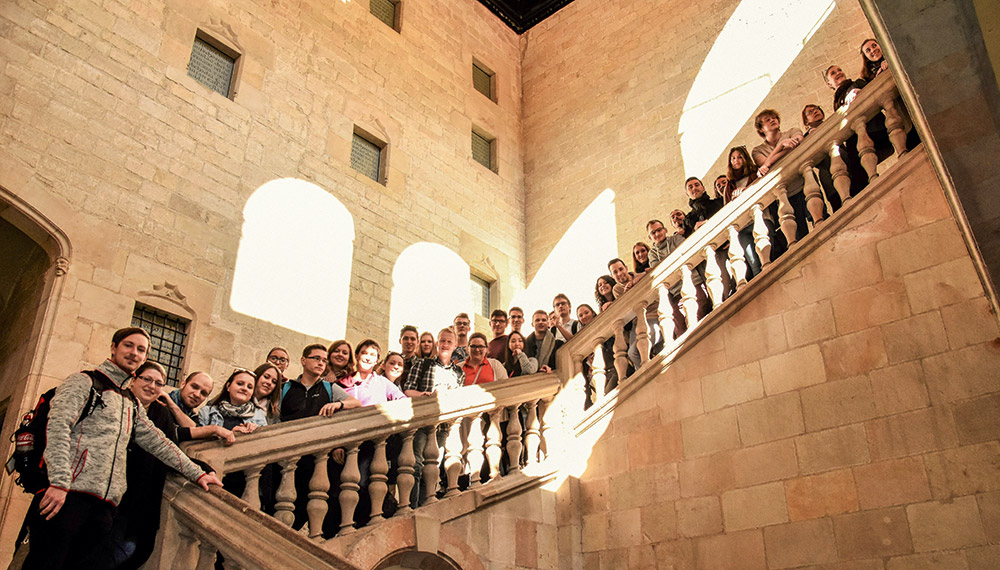
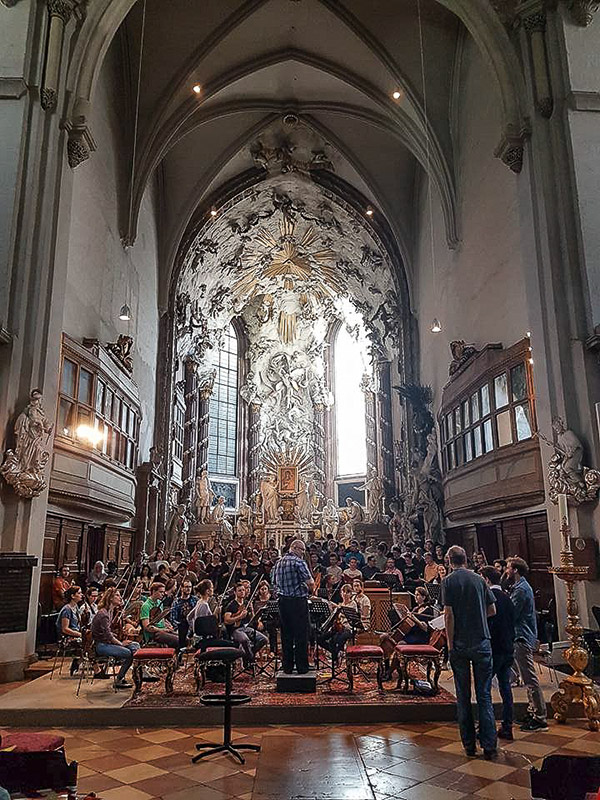
Since its establishment under Herwig Reiter in 1983 as the Chamber Choir of the Academy of Music and Performing Arts Vienna (as the mdw was known at the time), this formation has established itself as a permanent fixture of Viennese concert life. Its members are mdw students with an interest in choral music who come together for one year at a time to devote themselves to choral music of all musical styles and eras. In 1999, it was renamed WebernKammerchor (analogue to the Webern Symphonieorchester), since which time Alois Glaßner and Johannes Hiemetsberger (who led the choir from 2011 to 2016) have built it up step by step to become an independent ensemble of superlative standards. “I view the WebernKammerchor as an mdw-based choral offering that’s interesting and truly outstanding in terms of its quality,” explained Alois Glaßner in a conversation with mdw Magazine. Participation is never on a compulsory basis; the choir is a voluntary elective open to all singers. “And if you want to have a good choir in which nobody’s singing because they have to,” continues Glaßner, “you need to offer the students—who are all quite busy—something truly good. Because choral work at a sophisticated level is extremely time-intensive”.
Motivating Challenges
If the choir’s artistic leadership and organisers want singers to decide to participate, with all the investments of time and money that this entails, they need to bring a great deal of commitment as well as several other things to the table—things like interesting projects, work at a high musical level, and a good rehearsal atmosphere—in order to become and remain an interesting option for advanced singers amidst the myriad demands of compulsory subjects as well as the many opportunities outside the University.
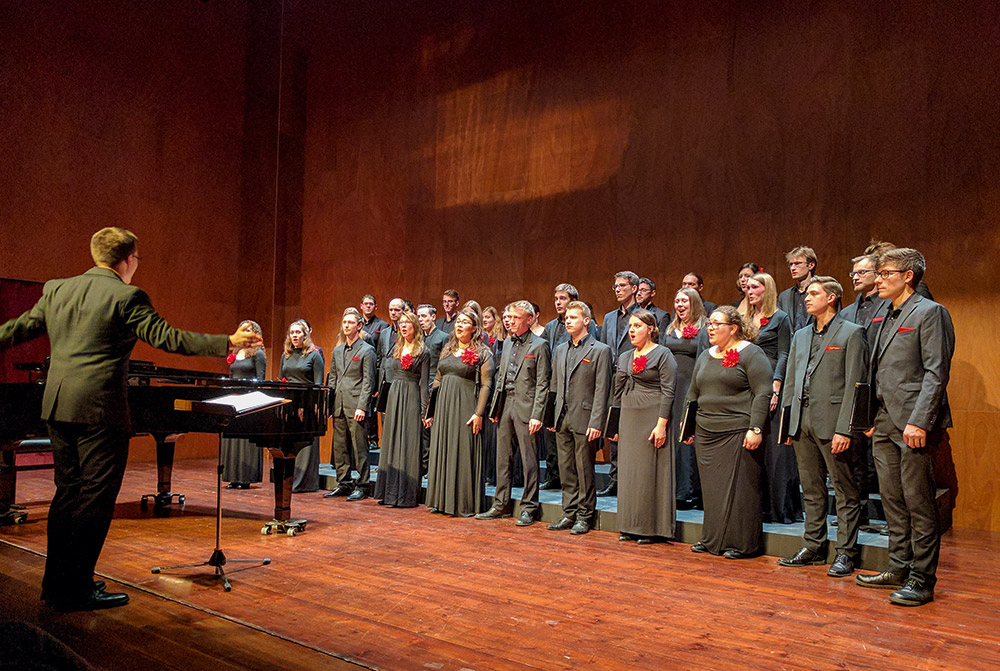
The choir’s international tours are one such attraction, and one of Glaßner’s important priorities in recent years has been and remains the organisation of an annual concert tour combined with academic exchange. To this end, the mdw makes use of its wide-ranging connections with other arts universities and academies while also establishing new contacts in the interest of affording staff members closer looks at their respective choral traditions and programmes in which choir directors are trained. But it’s the students who benefit most of all from the enrichment of getting to know different approaches as well as forming international friendships.
Sparking Mutual Interest
A further goal related to musical bridge-building is joint projects with the option of inviting the respective collaborating ensembles to Vienna. “It was Johannes Hiemetsberger who began doing exchange trips with the choir to places including Munich and Helsinki. And then, a few years ago, I formally submitted our concept to the University under the heading of Choral Bridges. Since then, the mdw has been providing energetic support to this resource-intensive project, which we’ve been able to pursue quite actively over the past three years,” Glaßner explains. In this context, the ensemble has so far come together with the Madrigal Choir of the University of Music and Performing Arts Munich (Germany), the Mississippi Concert Singers (USA), and the Chamber Singers of the University of Illinois (USA) as well as with students of the ESMUC (Escola Superior de Musica de Catalunya, Barcelona, Spain)—both at their respective home institutions and at the mdw. Most recently, the ensemble set off for Germany to tread “in Bach’s footsteps” in the form of a tour that included concerts in Leipzig, Arnstadt, Jena, and Weimar—and saw an exchange programme initiated with the chamber choir of Weimar’s University of Music FRANZ LISZT.
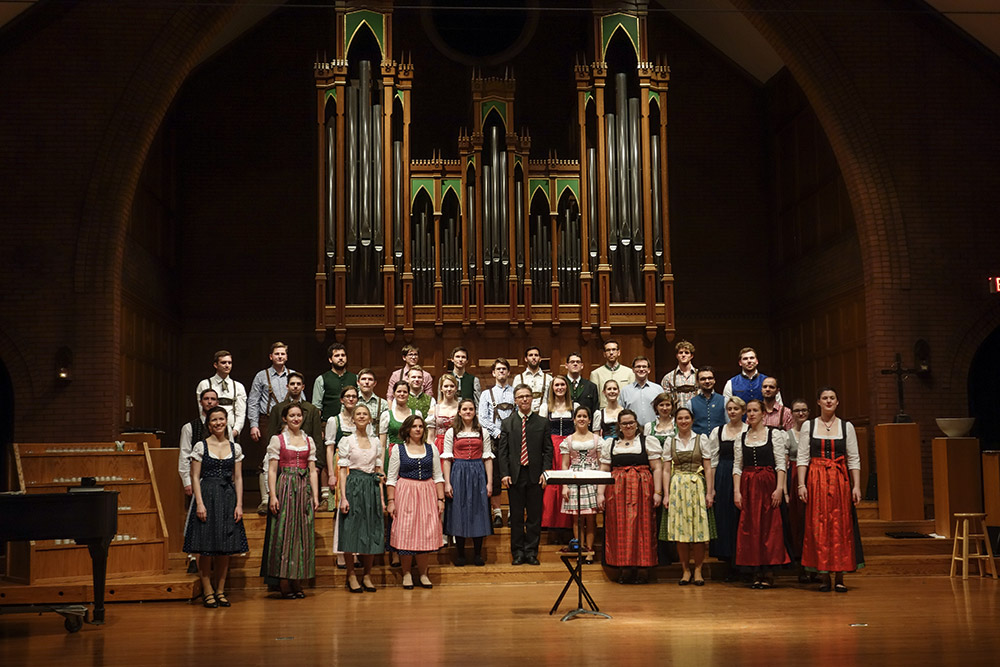
In April 2019, the WebernKammerchor has been invited to appear at the International Music Festival of Bogotá, Colombia. The ensemble is packing along two separate concert programmes: Franz Schubert’s E-flat Major Mass and a challenging assortment of a cappella works. And for 2020, the plan is to mount the choir’s next European tour.
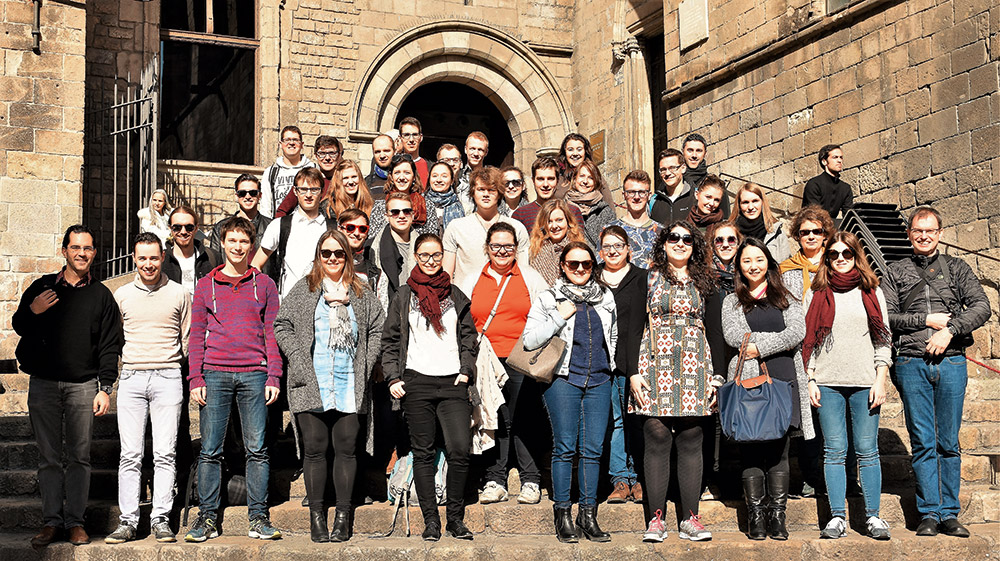
Enriching New Discoveries
Glaßner, as a choir directing professor, is quite generally interested in the multitude of choral and educational traditions to be found all over the world. Among these, the American system is one that contrasts with the European tradition to a particularly strong degree. U.S. universities and colleges invest considerable amounts of money in scholarships for choristers based on the realisation that choral singing bears within it potential that extends far beyond the musical realm to encompass teambuilding, society-building, identity-building, and the enhancement of a university’s image. And the intensive rehearsal work that all this entails ends up having a corresponding effect on musical quality. But within the USA, conditions differ from state to state: the strong choral tradition in Texas, for example, contrasts with those of a number of states that see virtually no special activity in this area. And in Europe, points out Alois Glaßner, it’s above all the English and Scandinavian—as well as various Central And Eastern European—choral traditions that are noteworthy.
With all that said, we can only add that we wish the WebernKammerchor and its director many more “Farewells” to exciting choir tours and just as many returns with all manner of new experiences packed along.

